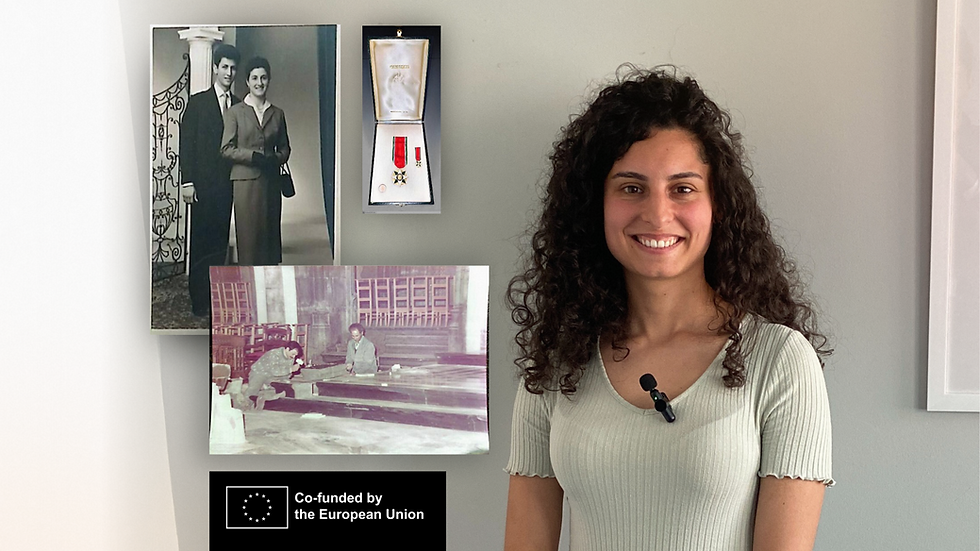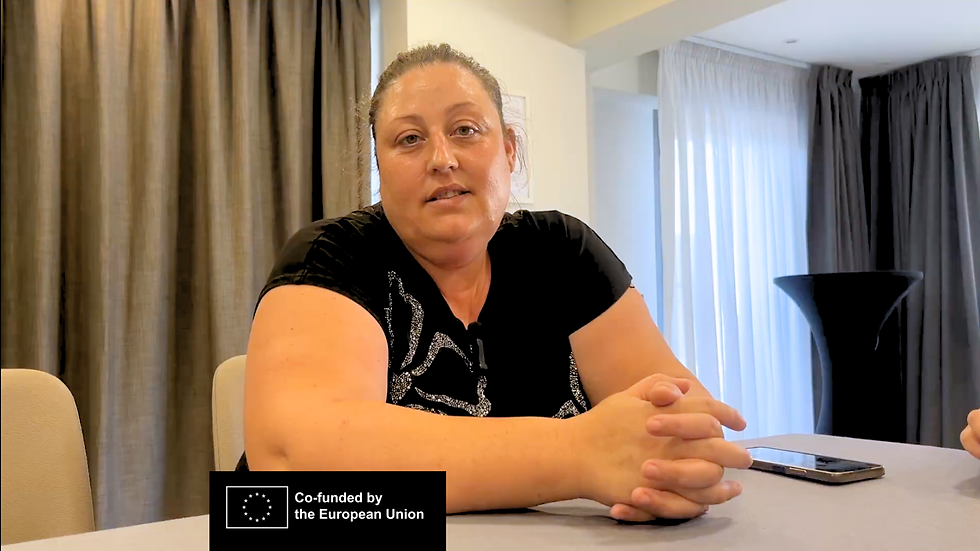VOICES From Migrations | Alissa Scifo's story (Part 1)
- Changemakers
- Jul 9
- 3 min read
Updated: Aug 12
"VOICES From Migrations" is a project co-funded by the European Union that gives voice to the untold stories of migrants. Alissa Scifo is the granddaughter of migrants who arrived in Belgium in the 1950s to work in the mines. This is her story.

“Coming from a family of immigrants from Ciociaria who arrived in Belgium in 1950, it can be said that my twin sister and I are fruit of the Liège tradition.
It all began in the Comino Valley in 1944. My great-grandparents' house, in the village of Atina, was requisitioned by the German occupiers. Allied bombings hit the property and injured my grandmother, Liliana, in the leg when she was still a child.
On the other hand, in the village of Gallinaro, my grandfather, Antonio Volante, grew up without knowing his father, who had left for Libya where he was taken prisoner.
Shortly after the war, my great-grandparents from Gallinaro arrived in Belgium for "underground work”, in deplorable conditions. Like many immigrants of the time, they arrived in Genk before moving to the industrial area of Liège. My grandparents, Antonio and Liliana, met in the valley. My grandfather always proudly recounted how he courted my grandmother. Leaving Gallinaro by bicycle, he would visit her in Atina. Since he worked in Belgium during the year, they married long-distance, by proxy.
Later, my grandmother moved to Belgium by train, and my grandfather welcomed her with a bouquet of flowers at the old Guillemins station.
My grandfather then began working as a tiler. Here, in the marble and ceramics sector, prestigious organizations from Liège and abroad commissioned him for projects: the restoration of St. Paul's Cathedral in Liège and missions in Saudi Arabia and Cameroon. My grandfather's career earned him the Knight's Medal, an honor awarded by the Italian Consulate in Belgium. A source of great pride for the family.
1,600 km away, Ciociaria is still present in our home, to our great joy. With meals that extend into afternoons spent playing Neapolitan cards, singing nursery rhymes in dialect, or immersing ourselves in war stories.”
Interview with Luka Prpic, Cristall Russo, Bálint Fazekas, and Bisera Gjurovska
Original story in Italian:
“Provenendo da una famiglia di immigrati ciociari, arrivati in Belgio nel 1950, si può dire che io e mia sorella gemella siamo il frutto della tradizione di Liegi.
Tutto ebbe inizio nella Valle di Comino nel 1944. La casa dei miei bisnonni, nel villaggio di Atina, fu requisita dagli occupanti tedeschi. I bombardamenti alleati colpirono la proprietà e ferirono a una gamba mia nonna, Liliana, che era ancora bambina.
D'altra parte, nel villaggio di Gallinaro, mio nonno, Antonio Volante, crebbe senza conoscere suo padre, che era partito per la Libia dove fu fatto prigioniero.
Poco dopo la guerra, i miei bisnonni di Gallinaro arrivarono in Belgio per "lavori clandestini", in condizioni deplorevoli. Come molti immigrati dell'epoca, arrivarono a Genk prima di trasferirsi nella zona industriale di Liegi. I miei nonni, Antonio e Liliana, si conobbero nella valle. Mio nonno raccontava sempre con orgoglio di come corteggiava mia nonna. Partendo da Gallinaro in bicicletta, andava a trovarla ad Atina. Poiché lavorava in Belgio durante l'anno, si sposarono a distanza, per procura.
In seguito, mia nonna viaggiò in treno e mio nonno la accolse con un mazzo di fiori alla vecchia stazione di Guillemins.
Mio nonno iniziò quindi a lavorare come piastrellista. Qui, nel settore del marmo e della ceramica, prestigiose organizzazioni di Liegi e straniere gli commissionarono incarichi: il restauro della Cattedrale di San Paolo a Liegi e missioni in Arabia Saudita e Camerun. A mio nonno, la sua carriera valse la medaglia di cavaliere, un'onorificenza conferita dal Consolato italiano in Belgio. Un motivo di grande orgoglio per la famiglia.
A 1.600 km di distanza, la Ciociaria è ancora presente in casa nostra, con nostra grande gioia. Con pasti che si prolungano in pomeriggi trascorsi a giocare a carte napoletane, cantare filastrocche in dialetto o immergersi nei racconti di guerra.”
Intrivista di Luka Prpic, Cristall Russo, Bálint Fazekas, e Bisera Gjurovska
Read the article in My House of European History:

Funded by the European Union. Views and opinions expressed are however those of the author(s) only and do not necessarily reflect those of the European Union or the European Education and Culture Executive Agency (EACEA). Neither the European Union nor EACEA can be held responsible for them.



Comments